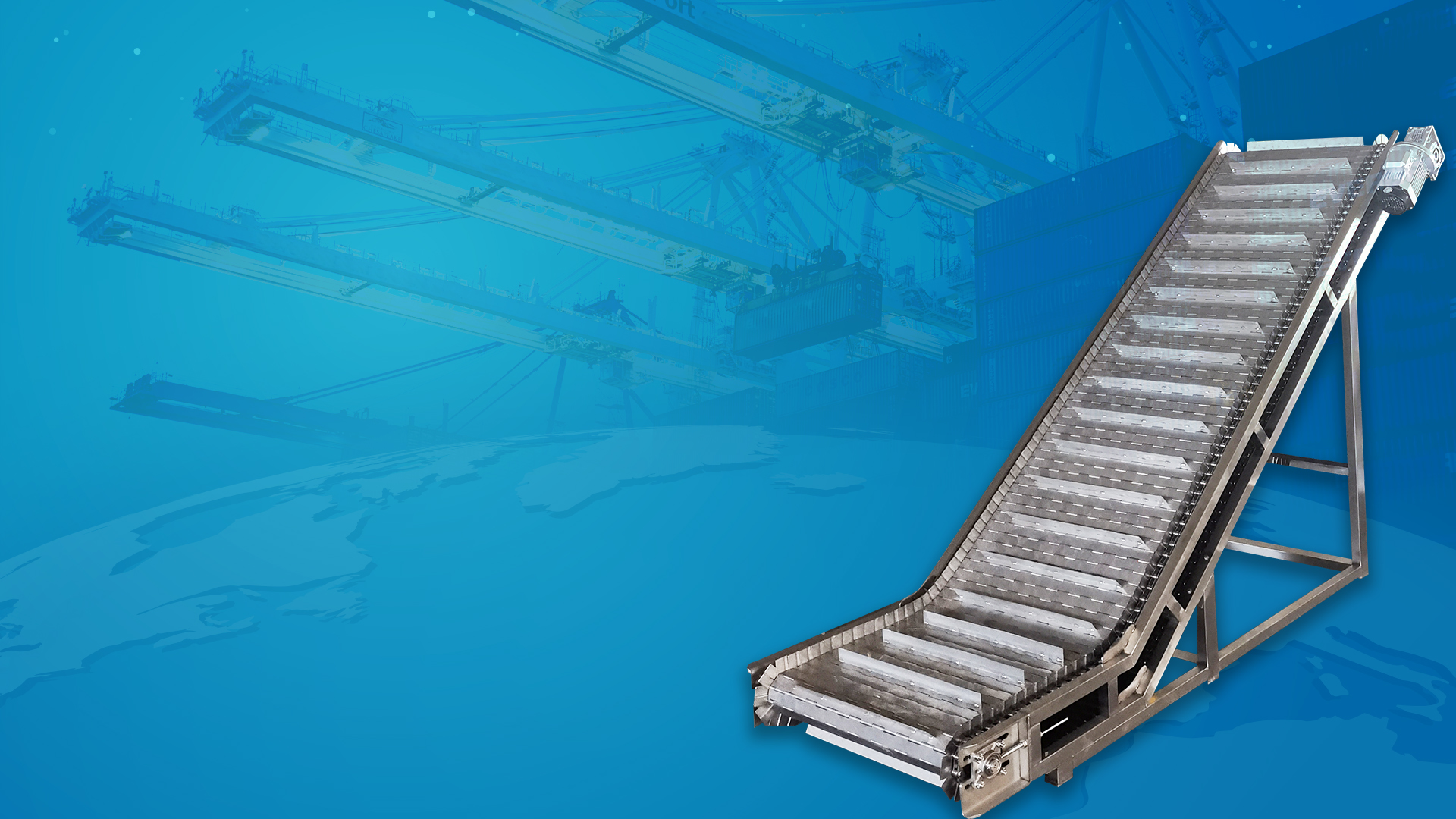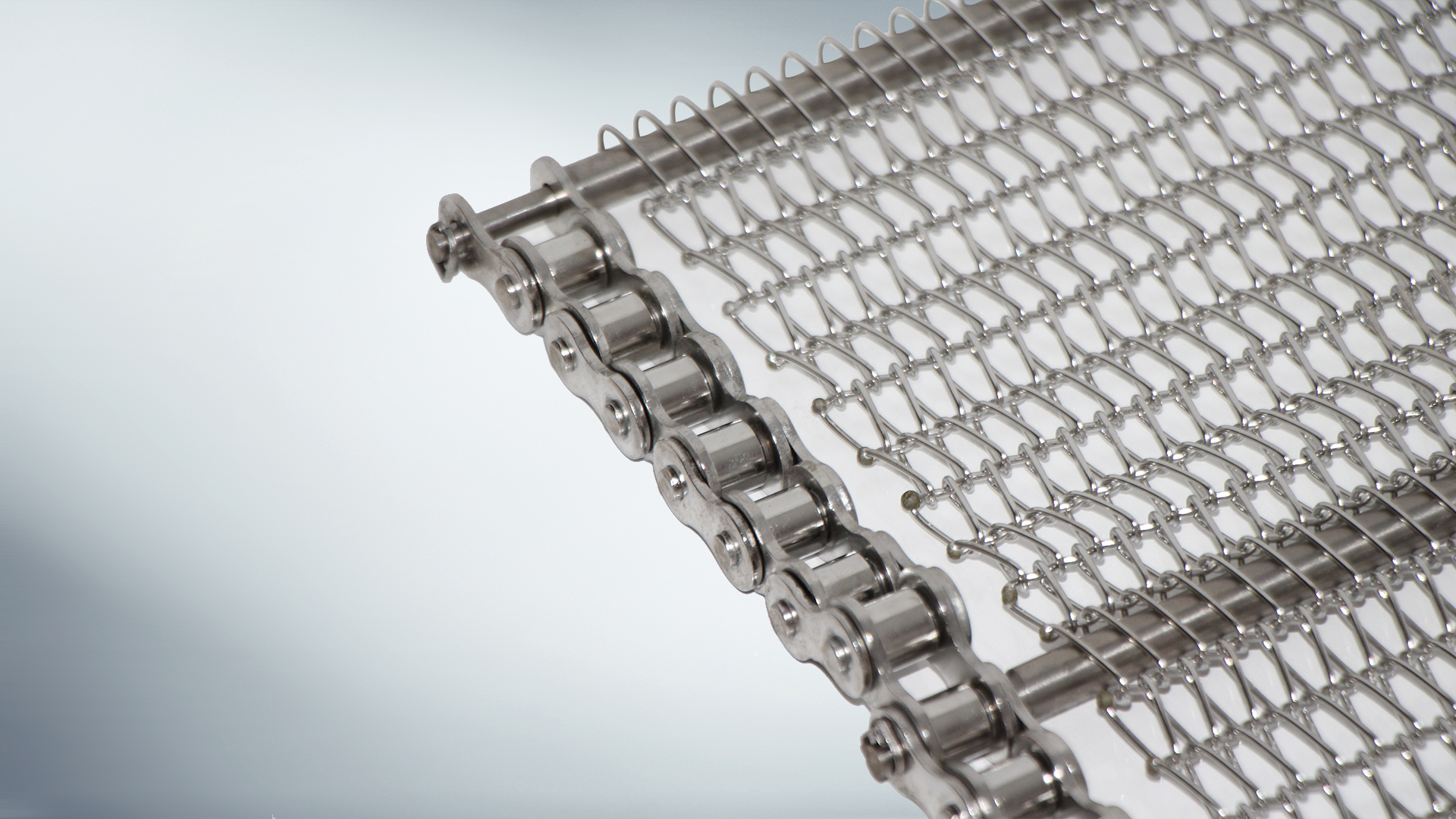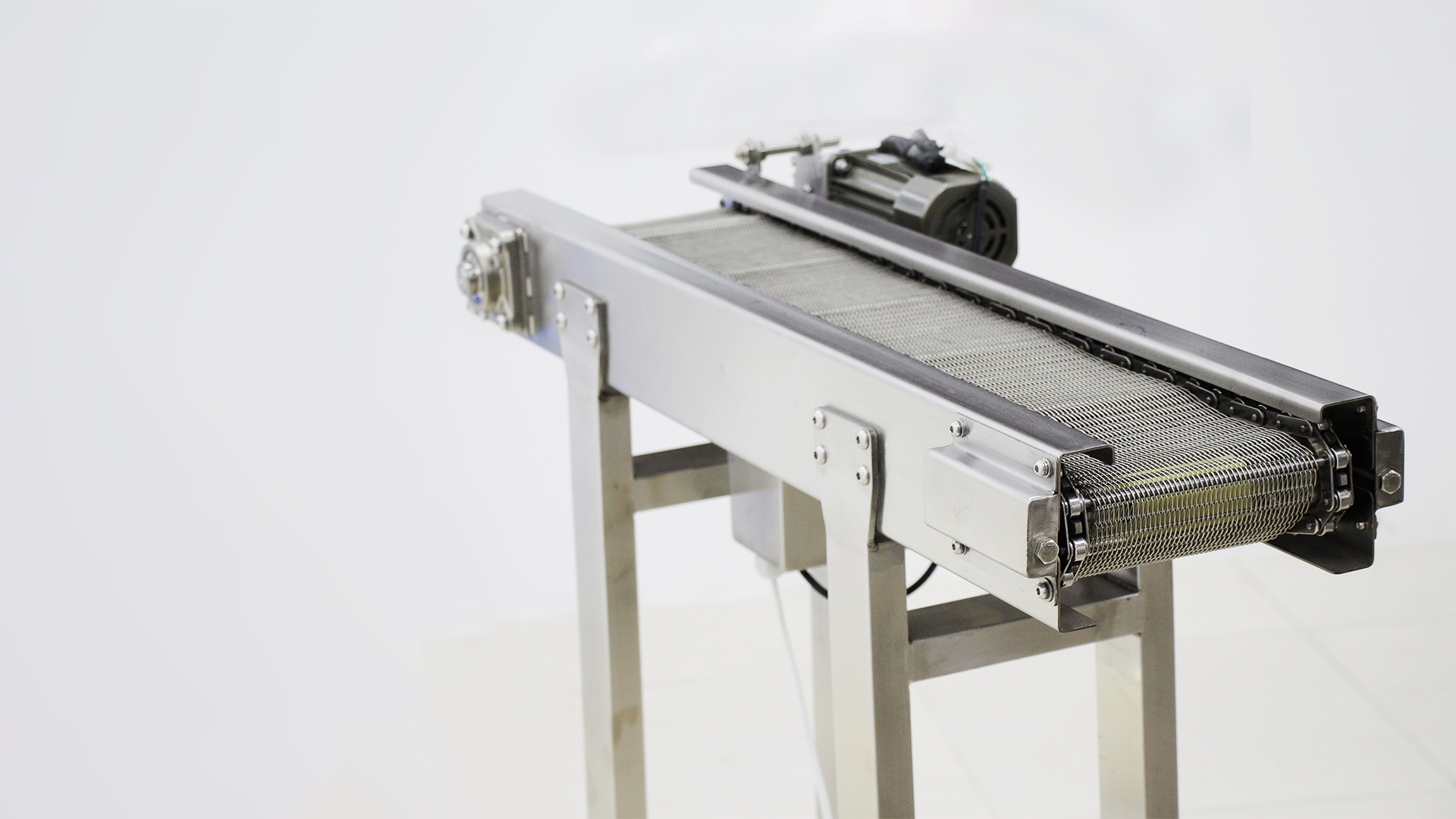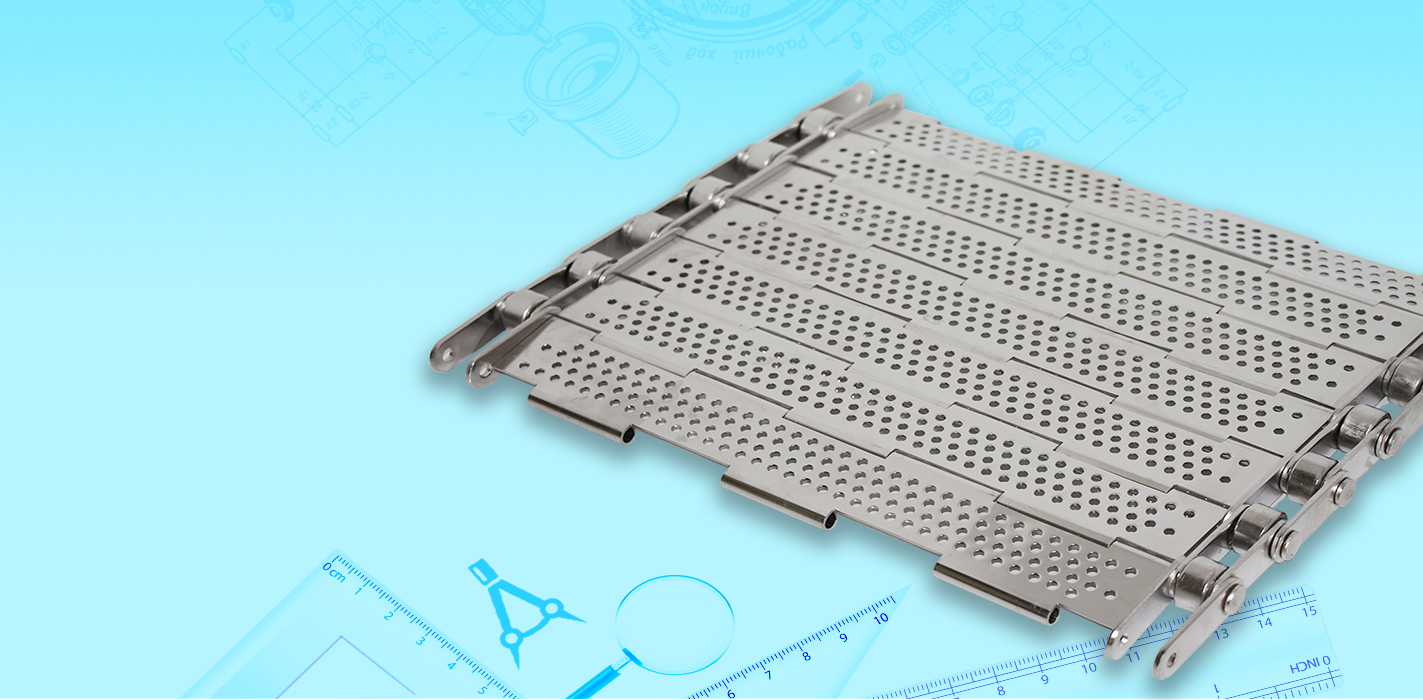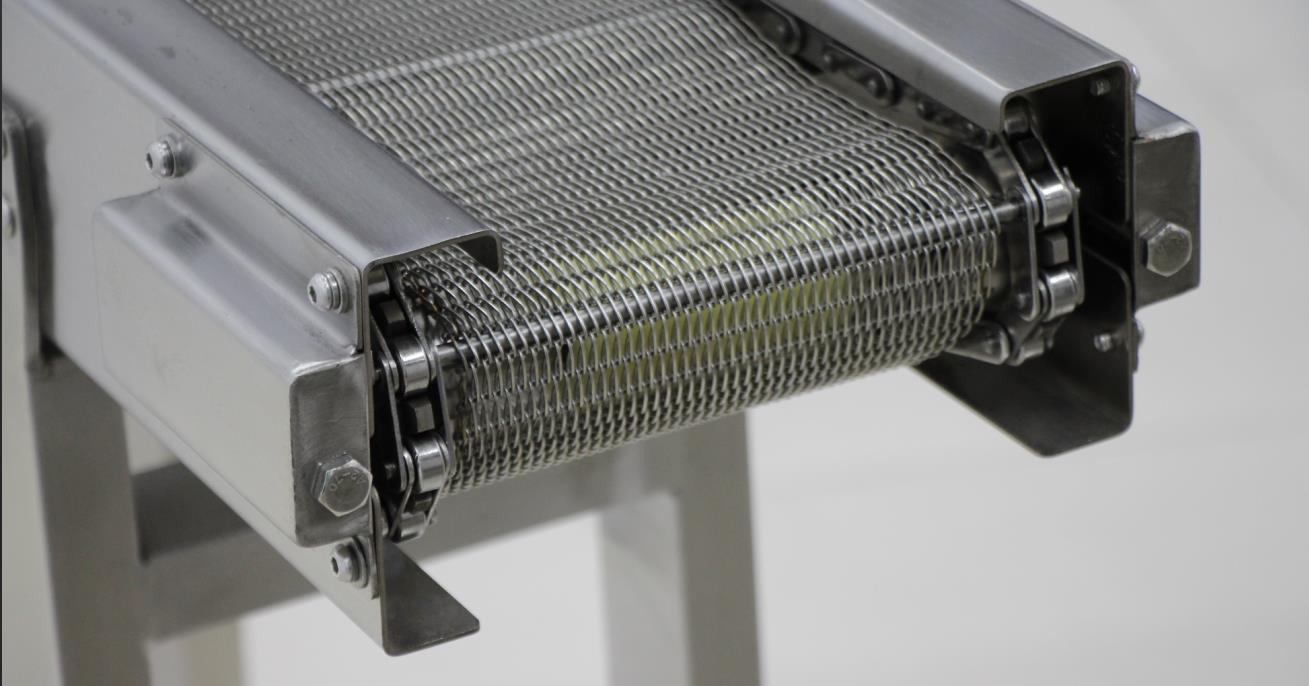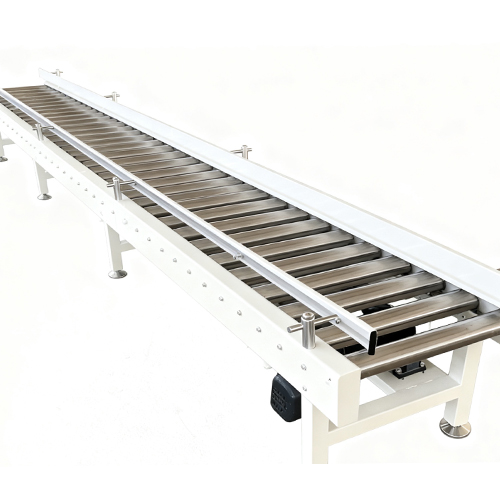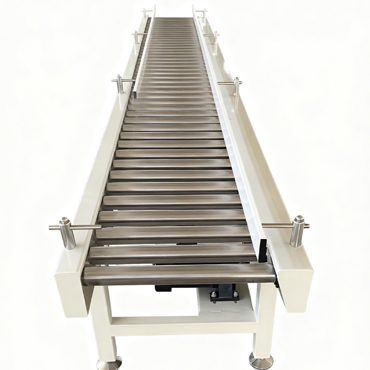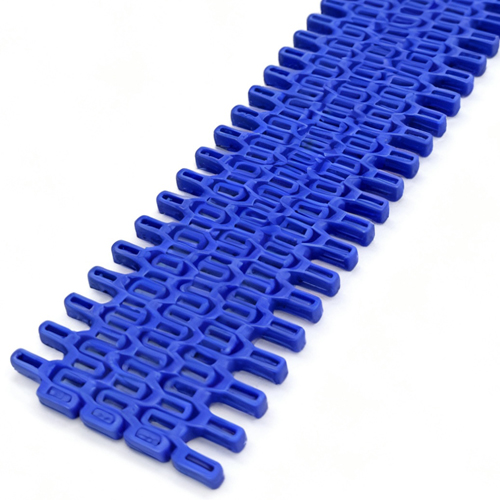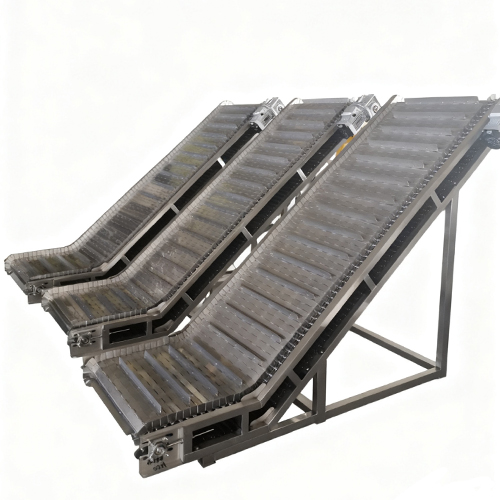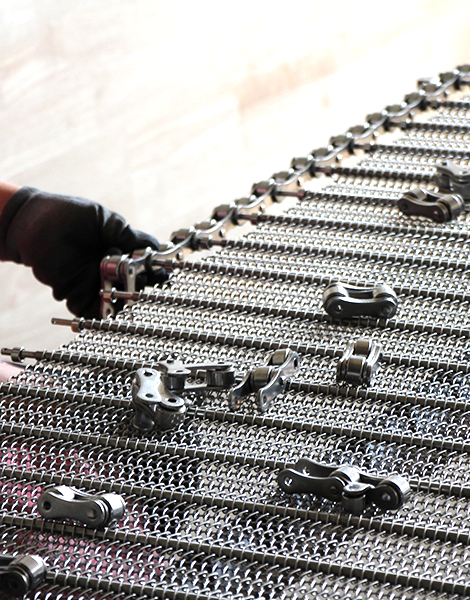The conveying capacity of chain plate conveyors varies depending on several factors, but is generally relatively high.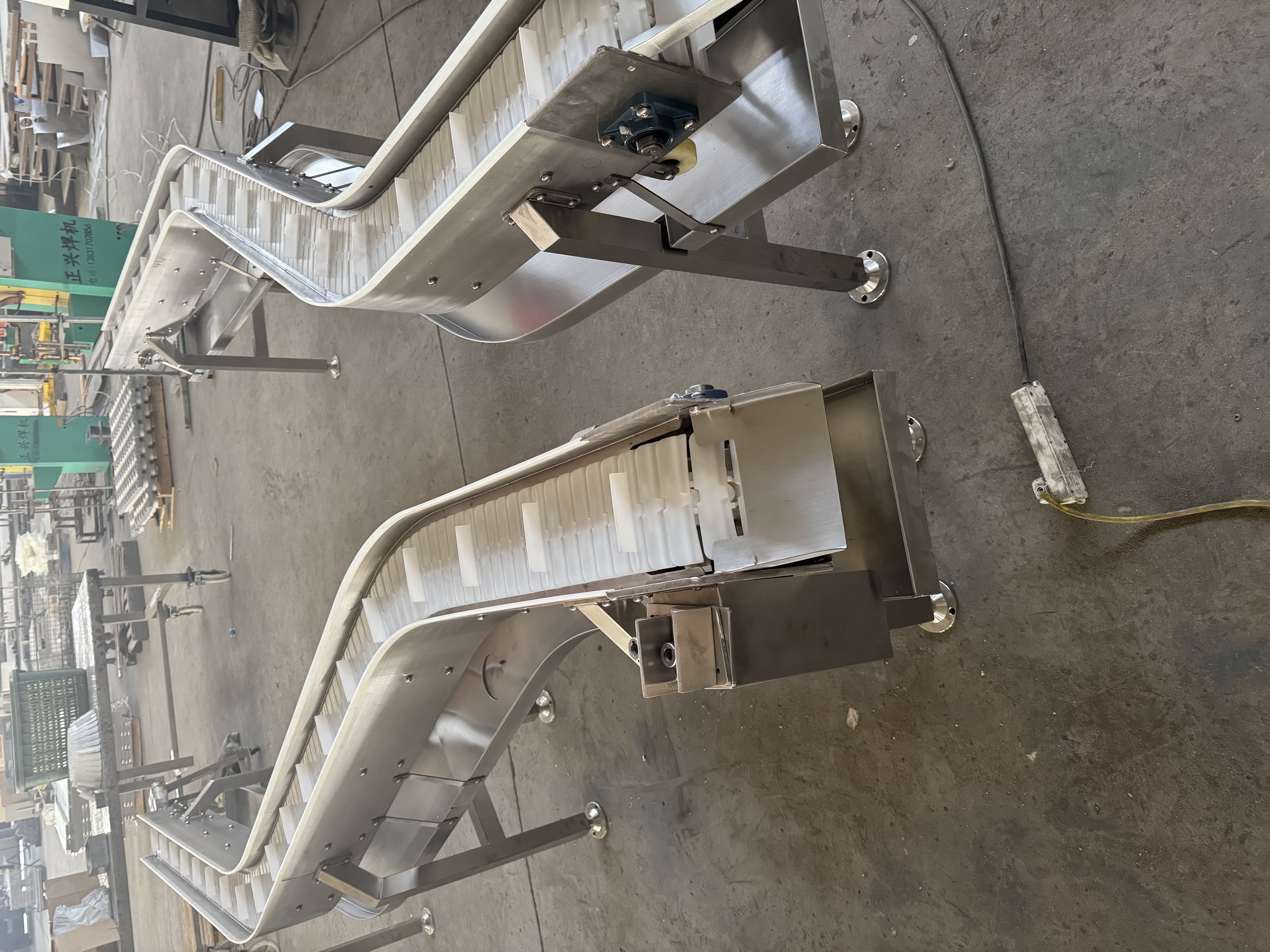
From a structural perspective, these conveyors typically use high-strength chains as traction components combined with flat chain plates to stably carry materials. The width, length, and pitch of the chain plates and chains can be designed and adjusted according to different conveying requirements. For instance, wider chain plates can carry more material, longer conveying lines can transport material over long distances, and larger pitches can increase conveying efficiency.
In terms of material characteristics, chain plate conveyors are well-suited for conveying regularly shaped materials, such as granular, blocky, or sheet-like materials, at relatively stable speeds. The conveying speed of common chain plate conveyors generally ranges from 0.1 to 3 meters per second. Reasonably adjusting the speed and chain plate specifications can increase the hourly conveying capacity to several or dozens of tons.
In practical application scenarios, chain plate conveyors can transport foods such as cookies and candies in the food processing industry with a capacity of several tons per hour to meet the demands of large-scale production. In the logistics and warehousing sector, they can transport goods such as cardboard boxes and pallets with a capacity of several dozen tons per hour to effectively improve logistics operation efficiency.



